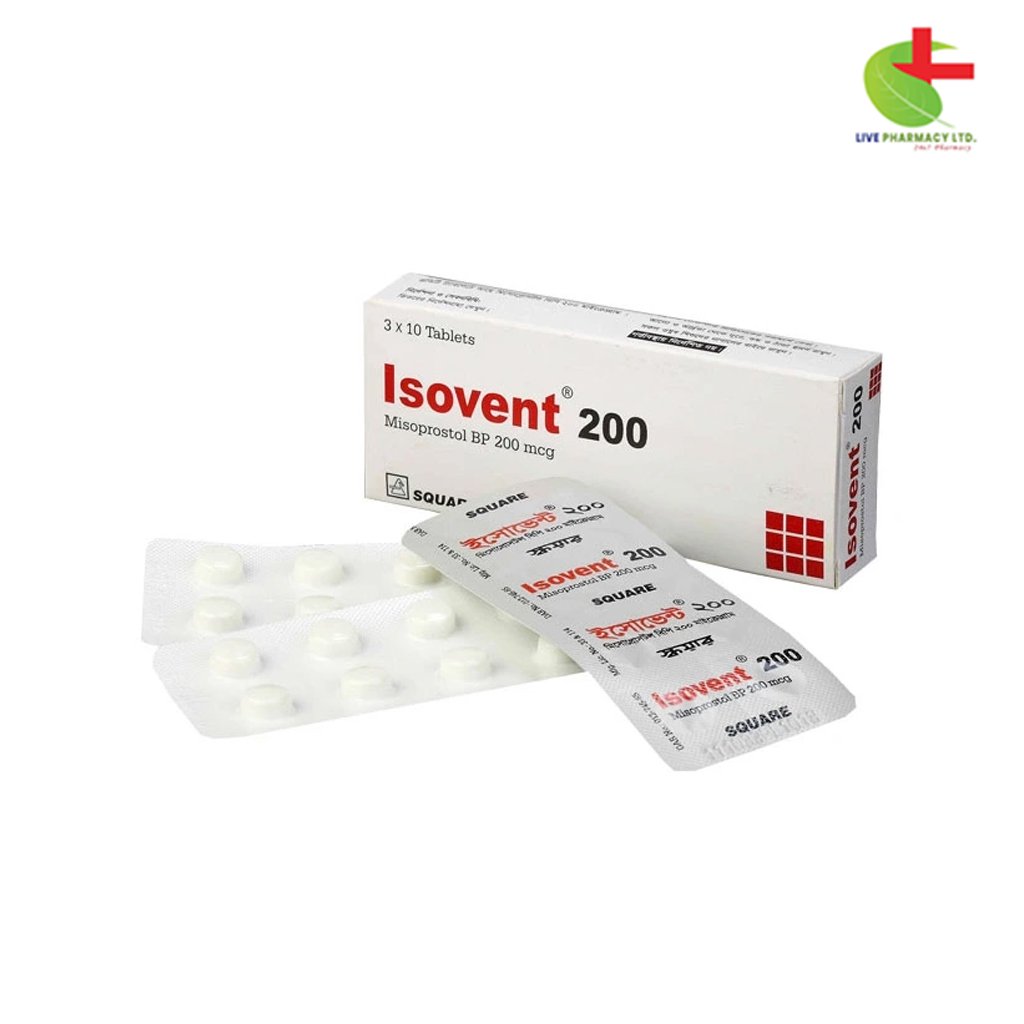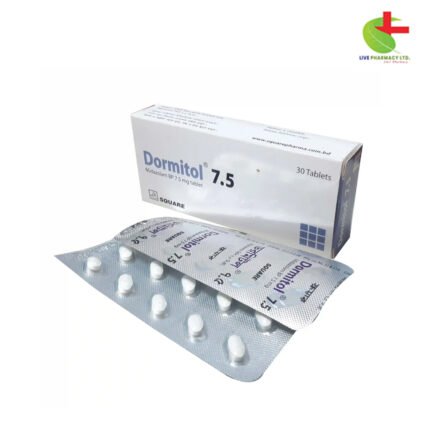Isovent 200
151.00৳ Strip
- Isovent: a versatile pharmaceutical solution addressing gastric and duodenal ulceration.
- Proven efficacy in preventing and healing ulcers induced by NSAID usage.
- Trusted for labor induction and management of postpartum hemorrhage.
- Precision formulation for optimal therapeutic outcomes.
- Reliable support for diverse medical needs with proven effectiveness.
 Brand
Brand
|
Square Pharmaceuticals PLC |
|---|---|
 Generics
Generics
|
Misoprostol |
Indications
Isovent serves several purposes, including:
- Preventing gastric and duodenal ulcers in NSAID users at a heightened risk of complications, such as the elderly, patients with concurrent debilitating illnesses, and those with a history of ulcers.
- Facilitating the healing of existing NSAID-induced gastric and duodenal damage.
- Healing gastric and duodenal ulcers in the absence of NSAID therapy.
- Inducing labor.
- Preventing and treating postpartum hemorrhage.
Pharmacology
After absorption, Misoprostol swiftly undergoes de-esterification, transforming into its active form, Misoprostol acid, which exhibits clinical efficacy. This acid is readily detectable in plasma. Misoprostol demonstrates both antisecretory (reducing gastric acid secretion) and mucosal protective properties in animal studies. NSAIDs hinder prostaglandin synthesis, potentially leading to reduced bicarbonate and mucus secretion within the gastric mucosa, contributing to mucosal damage. Misoprostol can enhance bicarbonate and mucus production, albeit primarily at doses of 200 micrograms and above, which also possess antisecretory effects. Consequently, it’s challenging to ascertain whether Misoprostol’s efficacy in reducing gastric ulcer risk stems from its antisecretory or mucosal protective effects, or both.
Dosage & Administration
For benign gastric and duodenal ulceration and NSAID-associated ulceration: Administer 800 micrograms daily in 2-4 divided doses alongside meals and at bedtime. Treatment duration should extend for a minimum of 4 weeks, potentially up to 8 weeks if necessary.
For prophylaxis of NSAID-induced gastric and duodenal ulcers: Prescribe 200 micrograms 2-4 times daily alongside NSAID intake. If intolerance occurs, a reduced dose of 100 micrograms may be considered. Misoprostol should be taken throughout NSAID therapy as directed by a physician.
For induction of labor: Place 25 micrograms in the posterior fornix of the vagina, repeating every 6 hours if necessary until a maximum of 200 micrograms is reached. Alternatively, administer 100 micrograms orally. If cervical ripening or active labor doesn’t commence, repeat oral doses of 100-200 micrograms every 4 hours up to a maximum of 6 doses. Monitoring of maternal and fetal parameters is essential during oral Misoprostol therapy.
For prevention of postpartum hemorrhage: Administer 600 micrograms orally immediately following delivery.
For treatment of postpartum hemorrhage: Administer 600 micrograms orally or 1000 micrograms per rectally.
Interaction
Isovent exhibits no clinically significant interactions with cardiac, pulmonary, CNS drugs, or NSAIDs. However, high doses of antacid may decrease Isovent’s bioavailability.
Contraindications
Misoprostol is contraindicated in individuals with a history of prostaglandin allergy and during pregnancy.
Side Effects
Isovent is generally well-tolerated, with common adverse effects involving the gastrointestinal tract, such as diarrhea, abdominal pain, dyspepsia, flatulence, nausea, vomiting, rashes, and dizziness. Administering the drug after meals and at bedtime, and avoiding concurrent use with magnesium-containing or other laxative antacids, may minimize diarrhea incidence.
Pregnancy & Lactation
Due to Misoprostol’s abortifacient properties, it’s contraindicated during pregnancy. It should only be used in women of childbearing potential if necessary for NSAID therapy and under stringent contraceptive measures, with thorough counseling on potential risks.
Precautions & Warnings
In cases of preventing and treating NSAID-induced gastric and duodenal ulcers, Isovent is contraindicated in pregnant women and should only be used if strictly necessary in women of childbearing potential under effective contraception.
In the induction of labor, stringent criteria should be met, and contraindications such as acute fetal distress, abruptio placenta, placenta previa, or unexplained vaginal bleeding should be considered. Monitoring of maternal and fetal parameters is vital during labor induction.
Use in Special Populations
Isovent’s safety and efficacy in children under 18 years old have not been established.
Overdose Effects
The toxic dose of Isovent in humans has not been determined. Symptoms of overdose may include sedation, tremors, convulsions, dyspnea, abdominal pain, diarrhea, and fever. Supportive therapy should be administered.
Therapeutic Class
Isovent belongs to the therapeutic class of drugs acting on the uterus, specifically prostaglandin analogs.
Storage Conditions
Store Isovent in a cool, dry place, shielded from light and moisture, and out of reach of children.













Reviews
There are no reviews yet.